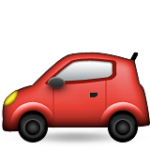The Tests
There are two tests you need to take to gain a full driving licence:
The Theory test
The Practical Driving test
THEORY TEST
The theory test consists of two parts. The first consists of multiple choice questions, followed by a hazard perception test. They are taken at the same time and both parts have to be passed. The whole test is taken on a computer. The multiple choice questions are posed, and answered using a touch screen. The hazard perception test is a series of video clips, where you have to click the mouse whenever you see a potential hazard.
You can book your theory test online at www.gov.uk/book-theory-test
There is assistance if English is not your first language. You can listen to the test being read out in one of 20 languages. There is also help for candidates with reading difficulties or dyslexia.
When you attend the centre for the test you must take your driving licence, the photo card part.
You will be told the result of the test straight away. When you have passed the test you will be issued with a pass certificate and number. This is valid for two years. If you do not pass the practical test within that time, you will have to retake and pass the test again before you can take the practical test.
Sandra can help you with learning your theory questions and with the use of practice hazard perception videos.
PRACTICAL DRIVING TEST
When you have passed the theory test and you are consistently reaching a level 5 with your practical driving skills you are ready to take the practical driving test.
When you book your test you will need to have the following:
Your theory test pass certificate number
Your driver number – found on your provisional licence
Your Driving Instructor’s ADI number
Your credit/debit card details
When you have booked your test, the DVSA will send you confirmation, either by email or by letter. You need to take this with you on the day.
Sandra recommends that you take your test in the car that you are most familiar with. In most cases, this is your Instructor’s car. If you decide to take the test in your Instructor’s car, it is normal to have an hour lesson directly before your test. It gives you a chance to warm up , with plenty of reassurance from your Instructor. It is inevitable that you will be feeling nervous. Taking your test in my car you can be sure that it is suitable, roadworthy and properly insured for you to take the test. If you do decide to use your own vehicle the following rules apply:
Legally roadworthy, with a current MOT certificate if over 3 years old
Mechanically sound and all equipment required by law must be fitted and working correctly
Fully covered by insurance for its present use and for you to drive. You will have to sign a declaration at the beginning of the test. It is unlikely that a hire car would be covered. You would have to confirm this with the company.
A valid tax disc must be displayed.
L – plates need to be fitted to the front and rear of the vehicle. It is not advisable to have them fixed onto the front and rear windscreens as it affects visibility.
Seatbelts – should be fitted and working properly and in a good and clean condition.
Head restraints fitted (‘slip on’ type head restraints are not permissible on test).
An additional interior rear view mirror for the examiner
If any of the above are overlooked you will not be able to take your test in the car and you will lose your test fee. You will not be able to take your test if the vehicle is unsuitable e.g.
Has no clear view to the rear, other than by the use of exterior mirrors
Has only a driver’s seat
Has more than eight passenger seats or is over 3.5 tonnes in weight
It does not have seatbelts or head restraint fitted to the passenger seat
It has been subject to a manufacturers recall and you do not have proof of the work having been carried out
It is loaded or partly loaded
It is towing a trailer
You are allowed to use a left-hand drive car, but more care is required and you must make full use of mirrors.
On the day of the test you must take the following documentation:
The photo card part of your licence
Theory test certificate
Confirmation letter or email
When you have arrived at the test centre and parked up, you will wait in the waiting room. There is normally more than one candidate taking the test at the same time. Sandra will be there with you, trying to keep you calm and relaxed and in a positive frame of mind. The examiner will come and call you by name. He/she will ask to see your documentation and ask you to sign the test report form. He/she will then ask you if you would like your Instructor/supervising driver to accompany you on the test. This is your decision. The benefits of having your Instructor in the car are that they can see your mistakes first hand for future analysis if required.
Before you reach your car the examiner will give you an eyesight test. If you cannot read a number plate from the minimum distance required you will not be able to continue with the test.
Next the examiner will ask you two questions from Show Me Tell Me
Once you are in the car the driving test will take approximately 40 minutes. During that time you will face different types of road and traffic conditions. You will have to perform two of the four manoeuvres and sometimes an emergency stop as well.You will pass the test if you can demonstrate that you can control the car, safely, with due regard for other road users, abiding by the Highway Code.
The examiner will assess any errors you make, depending on how serious they are. They will marked as a:
Driving fault – less serious, circumstances at the time did not make it potentially dangerous. If you make more than 15 driving faults it will result in failure.
Serious Fault – when a potentially dangerous incident has occurred or there has been a habitual driving fault, indicating a driving skill weakness.
Dangerous faults – when a dangerous incident has occurred.
You will fail your test if you commit a single serious or dangerous fault.
Whether you pass or fail the examiner will give you a brief explanation of the faults marked on the test report. He/she will ask you if you would like to have your Instructor present at the debrief. It is advantageous to have your Instructor present in order to hear first hand why you committed the faults.
WHEN YOU PASS
The examiner will ask to see your licence again. He can send it off directly to the DVLA, so that your full licence can be issued. He/she will issue you with a pass certificate, which is your proof that you are able to drive. If you do not wish to surrender your licence you can send your licence with the pass certificate to the DVLA yourself. You must do this within two years. Failure to do this will result in you having to retake the test.
NEW DRIVERS ACT
Your licence will be revoked if you receive six or more penalty points on your licence within two years of passing your practical test. This will include any points you might have received before passing your test. If you are caught speeding the minimum number of points is three so you only need to be caught speeding twice to lose your licence. You would then have to apply again for a provisional licence and retake the theory and practical tests.


